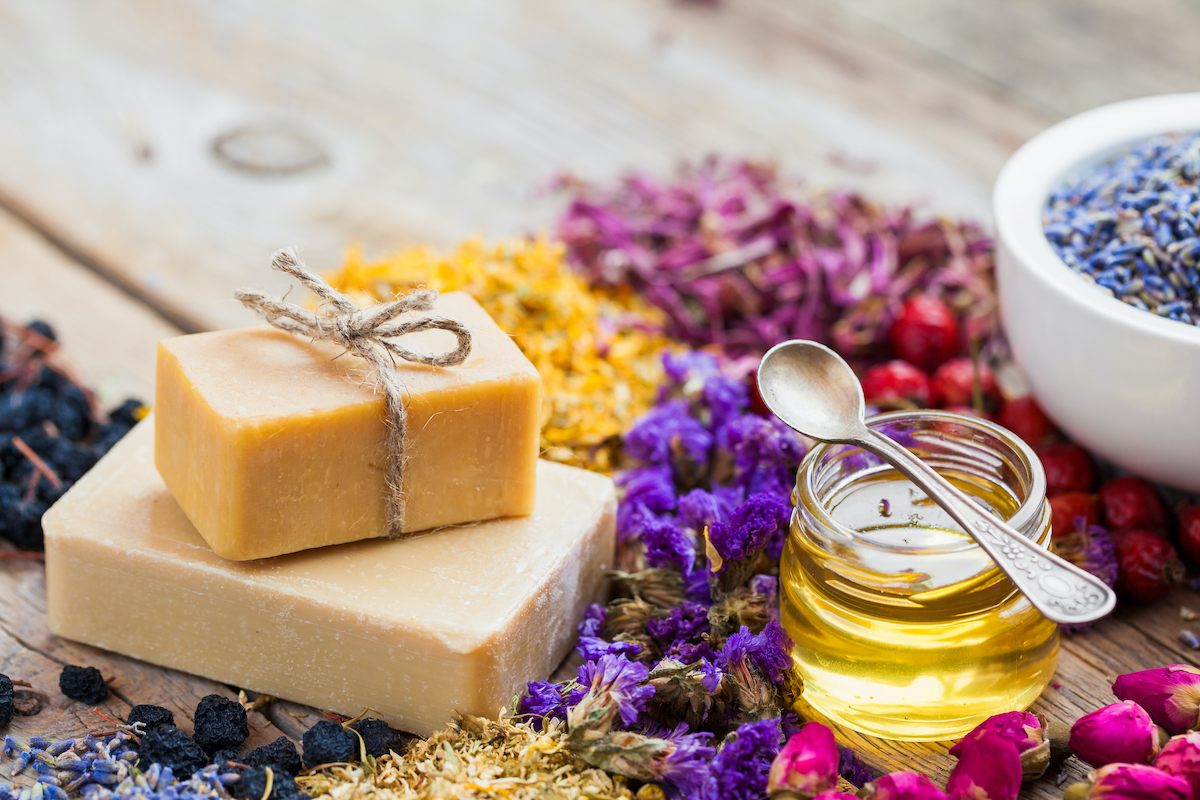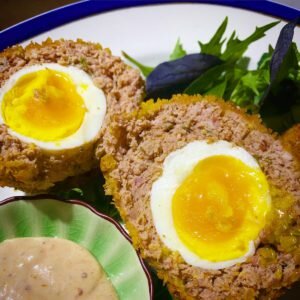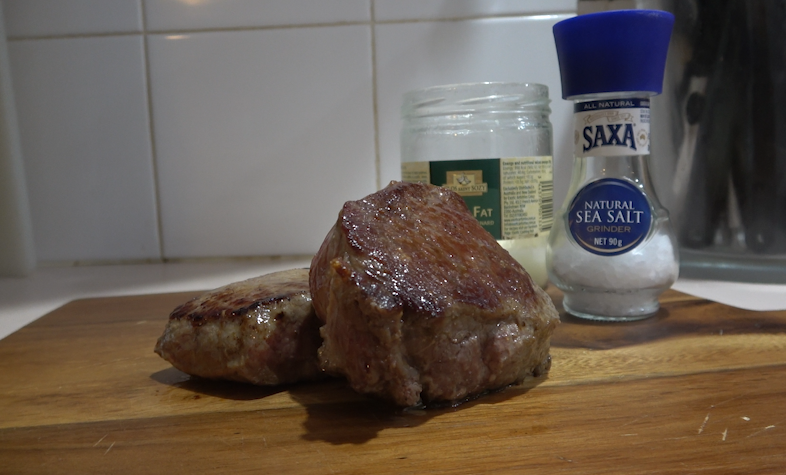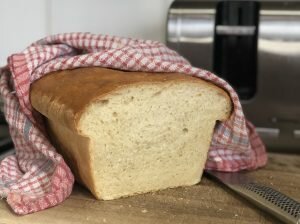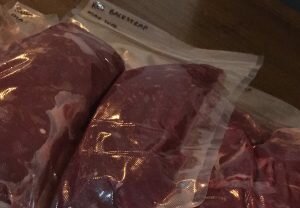In this quick tutorial, we will show you how to make your own homemade soap using animal fats such as deer tallow.
Sounds counterintuitive to make a soap out of something we usually want to wash off our hands, but tallow soap is a sustainable and natural way of making soap that has been around forever.
In its broadest sense, soap is the result of a chemical reaction that occurs when fat is mixed with the alkali in sodium hydroxide (lye) in a process called saponification.
Using tallow fats from animals you have either hunted or farmed yrouself is a great way to utilise more of an animal as it uses up a lot of the fat that would normally end up getting thrown away. Animal fat soaps will lather up just like any other soap but they are much better for your skin than a store bought soap filled with chemicals and artificial fragrances.
Choosing your ingredients
The two most basic ingredients for tallow soap is animal fat and lye. You’ll also require some type of liquid and something to make it smell nice (unless you are after a very plain, unfragranced soap).
When it comes to choosing your fat, you can literally use any type of fat – either animal, vegetable, plant or even a mixture of these.
Here’s a brief list of the different types of animal fats that you can choose from:
- Deer
- Rabbit
- Duck
- Goose
- Camel
- Emu
- Ostrich
- Kangaroo or wallaby
- Possum
- Goose
- Pig
- Goat
- Bear
- Donkey/horse
- Beef
- Lamb
- Chicken
- Lanolin (wool fat)
- Fish oil
- Beeswax
- Butterfat
Each different fat source has a different consistency and water content, so can produce variations in creaminess and results.
For example beef fat will be creamier than deer fat, and goat fat will give you a more bubbly lather. It’s worth experimenting with different kinds of fats to see which is your favourite. You can also mix animal fat with plant based fats such as coconut oil, olive oil, shea butter, nut oils etc.
Tallow is solid at room temperature and will need to be melted down as part of the process.
It’s the same with the liquid you choose. You can use just plain water, or, if you’re into experimenting, you can try using milk (dairy or plant-based), beer, wine, juice, purees etc. Again, just be aware that whatever liquid you do add will react differently with the lye, and will change the result. Milk produces a creamier soap, but is a little trickier to make, as milk tends to scorch at a high temperature. Unless you’re after burnt milk soap, heat the milk very gently.
One thing people are often worried about when making tallow soap is that it will smell like fat when you lather it. If made correctly, the soap should be odourless (if no essential oil fragrances are added). If there is any fat smell at all, it should be extremely mild. However, if you can’t get your head around that, then you can add in some aromatics. Which ones you choose is really up to your creativity. The simplest thing to do is add a few drops of essential oils, but you could also experiment with herbs, flowers, perfumes, honey or other natural fragrances. The sky really is the limit.
The amounts of lye, water and fragrance you need will depend on how much fat you have. The easiest way to figure out how much of each ingredient you need is to use a soap calculator. There are a plenty of them online like soapcalc.net or the-sage.com/lyecalc
Remember that lye is a caustic chemical, so always handle the lye with caution. Wear eye protection and gloves. And always add the lye to the water not the other way around. If you add the water to the lye you may get an eruption.
As a safety precaution, keep a bottle of vinegar close by. That way, if the lye gets on you or any surface, the vinegar will neutralise it.
Method:
- Combine the lye with your liquid. Best to do this in a well-ventilated area. Stir well. Remember to wear your safety gear as this process does cause the mixture to heat up.
- Allow the lye solution to cool to between 38C-45C (100F-125F).
- Heat the fat gently until completely melted. After this allow to cool to between 38C-45C (100F-125F).
- Combine the lye solution and the melted fats. Make sure these do not splash. Mix with an immersion blender until it’s about the consistency of custard.
- Add the essential oils or other aromatics and mix in.
- Pour the mixture into your soap moulds.
- Wrap the moulds in a towel then allow to sit and harden for a few days (the towel allows the soap to harden evenly.
- After the soap has hardened, remove from the mould and cut into bars then let it cure and dry for a few more days to finish the saponification process. This is best done on a drying rack of some sort to allow plenty of airflow around the bar.
Benefits of using animal fats
Here are just a few of the benefits of using animal fats to make soap:
- Hypoallergenic – there are no colouring or artificial fragrances that are common allergens for people. Any fragrances added from essential oils can be chosen and tested by you prior to putting it in the soap.
- Foamy – sodium tallowate is praised for the rich foam it produces when you lather with water.
- Long-lasting – the fat causes the soap to be a harder consistency and is slower to break down than other soaps, which means it lasts longer.
- Affordable – none of the ingredients are particularly expensive. In fact, most of the fats you can get for free when breaking down an animal – great if you raise or hunt your own. We have also sourced beef fat for free from our local butcher. Also, because the soap itself is longer lasting you have more time between purchasing materials than you would with purchasing store bought soaps.
- Sustainable – all of the ingredients in these soaps are quite easily made from natural ingredients and methods. Using the tallow that is often thrown away provides a more ‘nose to tail’ method of animal harvesting, which again is more sustainable in the long run. The flowers and herbs can be grown in your garden. Even the lye itself can be made at home, though we found it much easier to just buy from the store. Lye is essentially wood ash from a hardwood fire boiled up with some rainwater. The lye is the liquid skimmed off the top.
What is I Am Hunter?
I Am Hunter wants to change the way hunting is perceived and to change the conversation from a negative one driven by anti-hunters to a positive one led by hunters.
Our goal is to help hunters become positive role models and ambassadors for hunting, while simultaneously helping non-hunters understand why hunting is important.
You can become a supporter and help us achieve our goal and spread a positive message about hunting with the wider community.
Related content
Our other channels
Follow us on Facebook
Follow us on Instagram
YouTube
Subscribe to our YouTube channel.
Get our newsletter
Get our free monthly newsletter direct to your inbox
Listen on iTunes
Listen to our podcast on iTunes.
TV series
Watch I Am Hunter episodes on My Outdoor TV (MOTV)

